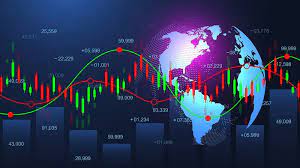
Reading Candlestick Charts in Forex Markets
Foreign exchange or forex trading is a market that deals with buying and selling of currencies. Trading in the forex markets can be profitable, but it can also be risky if you do not have a good understanding of how the markets work. One of the critical concepts you need to understand when trading forex is leverage. In this article, we will discuss everything you need to know about leverage in forex trading.
Leverage is the ratio between the amount of capital that is actually used in a trade and the amount of capital that is required to open that trade. For example, if a forex trader has a leverage ratio of 1:20, it means that for every $1 in their trading account, they can enter a trade for $20. Leverage is used to increase the potential returns from a trade, but it can also increase the risk of losses.
The most common leverage ratios in the forex markets are 1:50, 1:100, 1:200, 1:500, and 1:1000. These ratios allow traders to trade larger positions than they would be able to with the capital at their disposal. For example, if a trader had a trading account balance of $10,000 and used 1:100 leverage, they could open a trade position for $1,000,000. However, it is essential to use leverage wisely as it can also lead to significant losses.
When opening a trade position, a trader must maintain a margin level of at least 100%. The margin level is the amount of capital that a trader must keep in their account to maintain their open positions. If the margin level drops below 100%, the trading platform may automatically liquidate the position. The margin level is calculated as equity divided by the amount of margin required.
To calculate the margin required for a trade, the trader must multiply the position size by the margin percentage required by the broker. The margin percentage varies depending on the currency pair and the broker. For example, if a trader opens a 1-lot position in the USD/EUR pair and the margin percentage required by the broker is 2%, the margin required would be $2,000.
It is essential to manage leverage wisely to reduce risk in forex trading. A general rule of thumb is to use no more than 1:10 leverage for beginners and to increase gradually as you gain experience. Also, traders must maintain a proper margin level, so they do not risk getting margin-called and experiencing unnecessary losses. Always manage risk and avoid over-leveraging to ensure long-term profitability and success in the forex markets.
Conclusion:
In conclusion, leverage is a crucial concept that every forex trader must understand. While it can increase the potential returns of a trade, it can also significantly increase risks. Traders must use leverage wisely and maintain a proper margin level to avoid unnecessary losses. As a beginner, be cautious when using leverage and increase gradually as you gain experience. Remember, managing risk is the key to long-term profitability and success in forex trading.